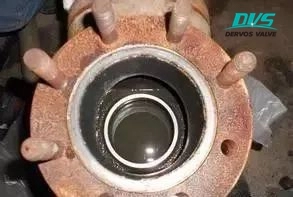Basic principle of sealing surface grinding of forged steel valves

The basic principles of sealing surface grinding include grinding process, grinding motion, grinding speed, grinding pressure and grinding allowance.
1. Grinding process
The grinding tool and the surface of the seal are well connected, and the grinding tool is subjected to conduct a complex grinding motion along the surface. Abrasive is placed between the grinding tool and the surface of the sealing ring. When the grinding tool and the surface of the sealing ring move relative to each other, some of the abrasive particles in the abrasive compound slide or roll between the grinding tool and the surface of the seal to cut a thin layer of metal on the surface of the seal. The peaks on the surface of the seal are first ground away and then the desired geometrical shape can be gradually reached.
Grinding is not only a machining process of abrasive-to-metal, but also a chemical action. The grease in the abrasive can form an oxide film on the surface to be processed, thereby accelerating the grinding process.
2. Grinding motion
When the grinding tool moves relative to the surface of the seal, the relative sliding path of each point on the surface of the seal to the grinding tool should be the same. Also, the direction of relative motion should be constantly changing. The constant change of the direction of movement makes each abrasive grain not repeat its own trajectory on the surface of the sealing ring, so as to avoid obvious grinding cracks and increase the roughness of the surface of the sealing ring. In addition, the intermittent change in the direction of motion does not allow the abrasive to be distributed more evenly, thereby cutting the metal on the surface of the seal more evenly.
Although the grinding motion is complicated, the direction of motion changes greatly, the grinding motion is always performed along the
conforming surface between the surface of the sealing ring and the grinding tool. Whether manually or mechanically grounded, the geometric accuracy of the sealing surface is primarily affected by the geometry accuracy of the grinding tool and the grinding motion.
3. Grinding speed
The faster the grinding motion, the higher the grinding efficiency. When the grinding speed is fast, and there are many abrasive grains passing through the surface of the workpiece per unit time, large amounts of the metal are cut off.
The grinding speed is usually 10 - 240m/min. For workpieces requiring high grinding accuracy, the grinding speed is generally not more than 30m/min. The grinding speed of sealing surface of the forged steel valve is related to the material of the sealing surface. The grinding speed of the copper and cast iron sealing surface is 10 ~ 45m/min. The grinding speed of the sealing surface in quenched steel and hard alloy is 25 - 80m/min. The grinding speed of the sealing surface in austenitic stainless steel is 10 ~ 25m/min.
4. Grinding pressure
The polishing efficiency increases as the grinding pressure increases, and the grinding pressure cannot be excessively large, and is generally 0.01 to 0.4 MPa.
When the sealing surfaces in cast iron, copper and austenitic stainless steel ground, the grinding pressure is 0.1 ~ 0.3MPa; for the quenched steel and hard alloy sealing surfaces, the grinding pressure is 0.15 ~ 0.4MPa. Take a larger value for rough grinding and a smaller value for fine grinding.
5. Grinding allowance
Since the grinding is a finishing process, the amount of cutting is small. The amount of grinding allowance depends on the machining accuracy and surface roughness of the previous process. Under the premise of ensuring the removal of the processing marks of the previous process and correcting the geometric error of the sealing ring, the smaller the grinding allowance, the better.
The sealing surface should generally be finely ground before grinding. And the minimum grinding allowance is: the grinding allowance in diameter is 0.008 ~ 0.020 mm; the grinding allowance in plane is 0.006 ~ 0.015 mm. For manual grinding or materials of high hardness, take a small value. For mechanical grinding or materials of low hardness, take a large value.
Grinding process is not suitable for the sealing surface of the valve body, which can adopt finish turning. The sealing surface after finish turning must be coarsely ground before it can be refined, and the plane allowance is 0.012 ~ 0.050 mm.